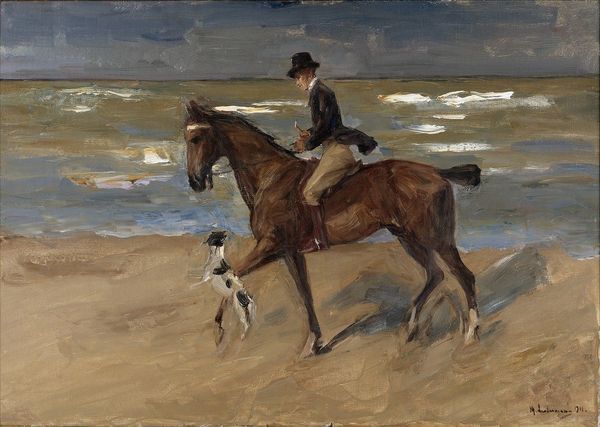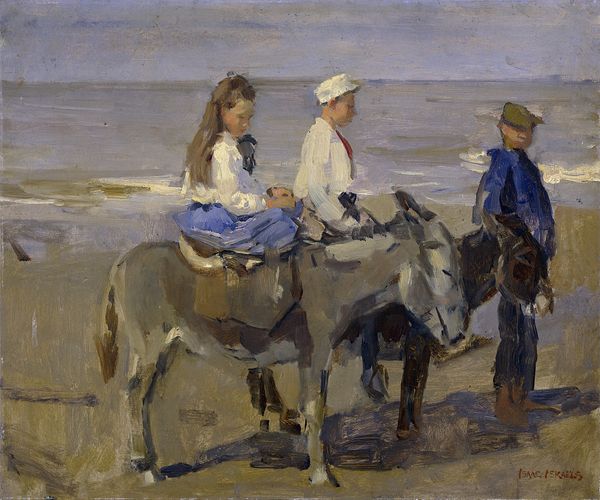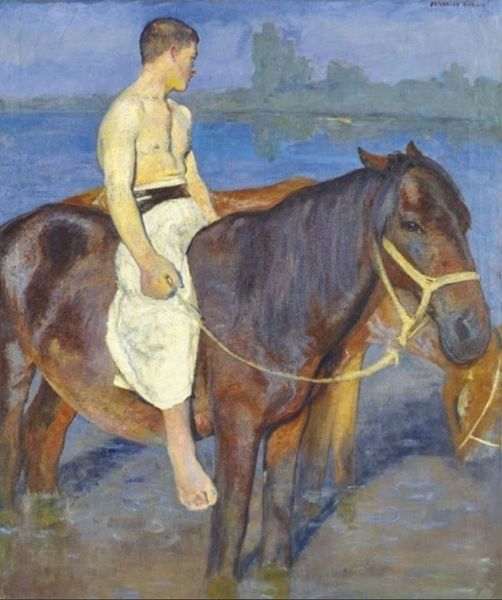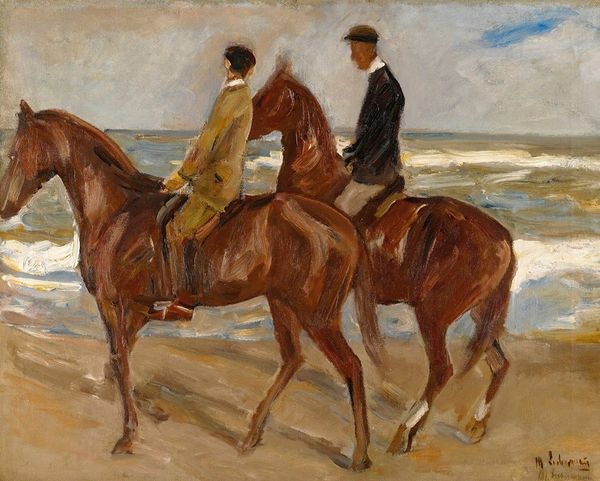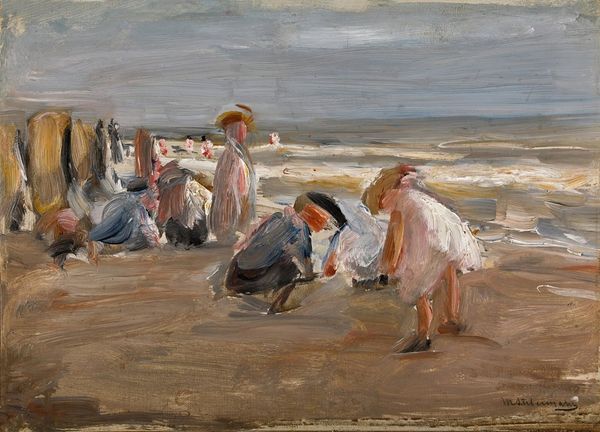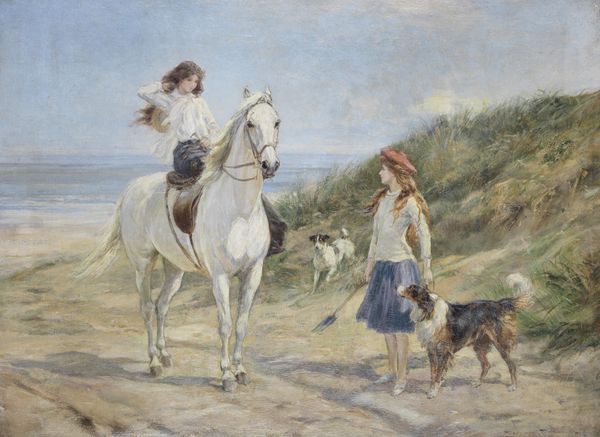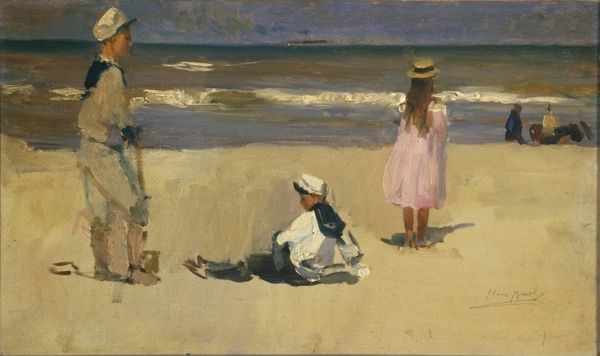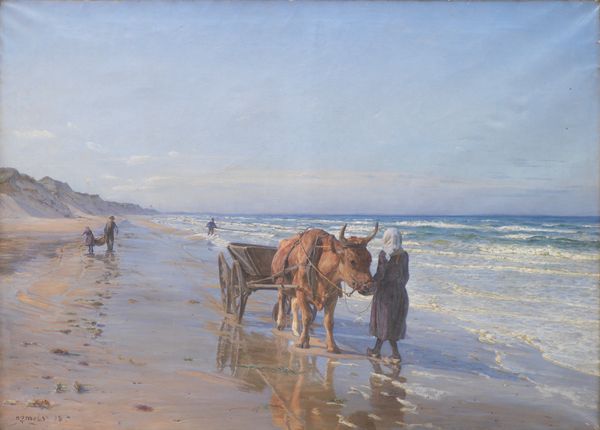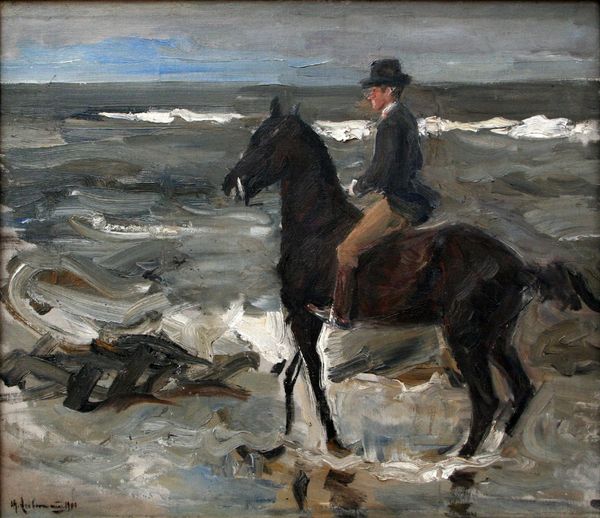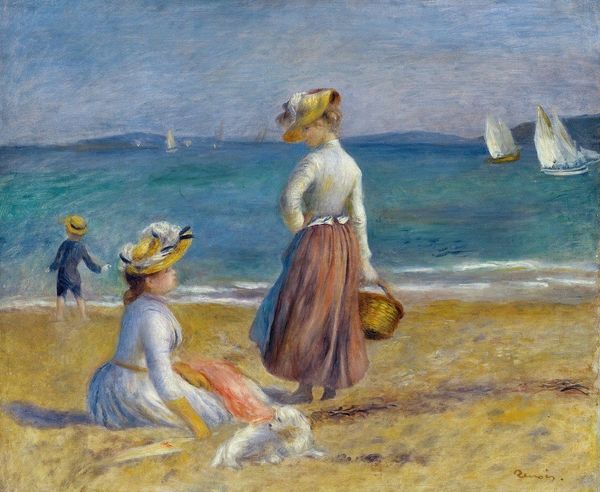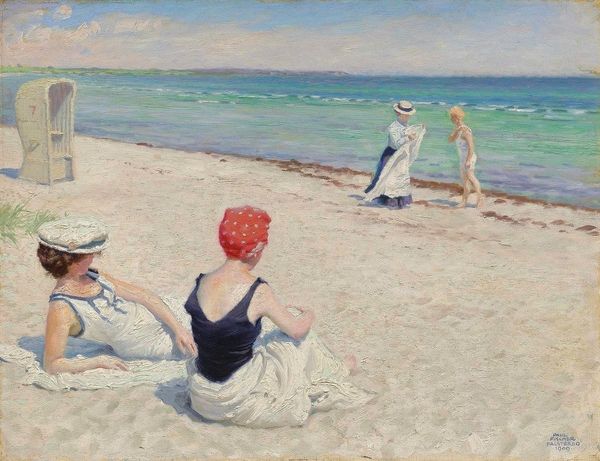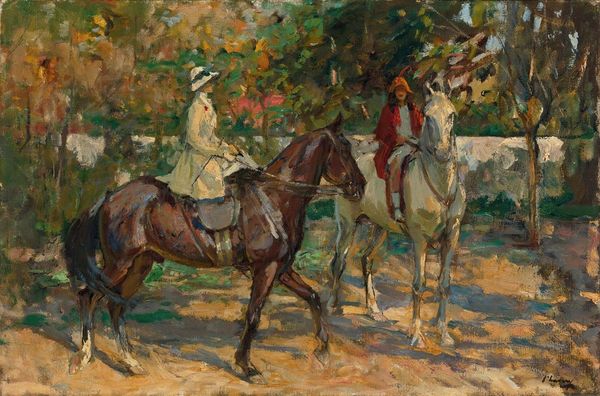
Copyright: Public Domain: Artvee
Curator: What strikes you first about Liebermann’s "Child Riding on a Donkey", created around 1901 using pastel? Editor: A gentle melancholy, definitely. The hazy light, the muted colors...it feels fleeting, almost like a memory fading at the edges. There’s an interesting balance between the solidity of the donkey and the ephemeral quality of the scene around it. Curator: That’s a beautiful observation. Liebermann, positioned within German Impressionism and later associated with the burgeoning German Expressionist movement, was deeply engaged with portraying the experiences of everyday people, especially within shifting social landscapes. The image evokes an arcadia, sure, but that reading can be contrasted with some challenging ethical questions of class. Who were these children? Editor: True, the scene’s surface serenity almost camouflages its complexity. But technique-wise, look how he uses layering and subtle variations in tone to build up form without losing that luminous, airy feel. Notice the brushwork in the water and the donkey's coat? It's masterful! Curator: Absolutely, the artistry is undeniable. The pastel medium here is telling, also. This work captures a particular kind of childhood, specifically leisure among families with the socioeconomic privilege to afford seaside pastimes. It represents an intriguing example of social practice and observation. Editor: But don’t you think the real focus here, technique-wise, is on light and movement? Look at how the pastel strokes create a shimmering effect on the water and suggest the donkey's gentle gait. Liebermann’s less concerned with the precise details and more with evoking a feeling. Curator: And yet the details contribute to the construction of the broader socio-historical context. This isn’t merely light and form. We're dealing with the early 20th century; questions of representation, class dynamics, and childhood innocence are all vital to unpack. Editor: Alright, I can see the richness of your view! For me though, it's a captivating visual study first. I love how he’s captured a momentary quality with an extraordinary balance of light, form and composition. Curator: And I value its contribution to wider narratives on childhood and social change during the advent of the twentieth century. Editor: Yes, a lovely convergence of both, finally.
Comments
No comments
Be the first to comment and join the conversation on the ultimate creative platform.
